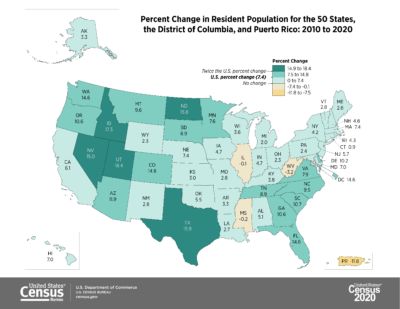[Editor’s Note: Too often we are lured by the sirens of science seductive call — promising the next technological breakthrough yielding (albeit fleetingly!) battlefield dominance — and neglect other key aspects of the Operational Environment (OE). Today, Mad Scientist Laboratory remedies one such oversight with a particularly insightful post by returning guest blogger and proclaimed Mad Scientist Caroline Duckworth, exploring the inexorable role demographics play in the OE. History is replete with once great powers that realized (too late) the influence demographics has on geopolitics. Read on to learn what demographic trends augur for the future of the U.S. Army, our allies, and our adversaries — Enjoy!]
Demographic changes have become increasingly concerning for governments and militaries around the world. In most developed countries, populations are aging and fertility rates are declining. In key developing countries, however, destabilizing population booms loom on the horizon. While the United States, our allies, and our pacing threats face the former challenge, the United States maintains a vested interest in the stability of regions facing population booms and will need to understand and monitor these trends carefully.
 More narrowly, demographic trends will affect how the U.S. Army executes its missions, both at home and abroad. Recruiting, interoperability with allies, and the composition of potential adversaries’ forces will all be impacted by demographic trends. Educating the Force on the challenges associated with these trends will enable our Leaders to begin generating proactive and creative solutions, ensuring continued Army readiness and success — in competition and conflict. Thus, it is necessary to consider each key actor in turn.
More narrowly, demographic trends will affect how the U.S. Army executes its missions, both at home and abroad. Recruiting, interoperability with allies, and the composition of potential adversaries’ forces will all be impacted by demographic trends. Educating the Force on the challenges associated with these trends will enable our Leaders to begin generating proactive and creative solutions, ensuring continued Army readiness and success — in competition and conflict. Thus, it is necessary to consider each key actor in turn.
The United States: Aging Population, Increased Diversity
The U.S. Census Bureau released the first stage of data for the 2020 census in April, capturing the demographic makeup of the United States. The results are concerning both for the U.S. economy and future Army operations. The U.S. population growth of 7.4% in the 2010s was the second slowest rate of increase in the history of the census, only barely faster than the growth of 7.3% following the Great Depression. Most individual states reflected this  country-wide slow-down, and three even lost population from 2010 to 2020. Preliminary results for cities such as Washington, D.C., however, show substantial population growth. Further results for cities, which have yet to be released, are expected to reflect this growth, though somewhat unevenly. Thus, while the country is growing less rapidly, it is becoming increasingly urban.
country-wide slow-down, and three even lost population from 2010 to 2020. Preliminary results for cities such as Washington, D.C., however, show substantial population growth. Further results for cities, which have yet to be released, are expected to reflect this growth, though somewhat unevenly. Thus, while the country is growing less rapidly, it is becoming increasingly urban.
The 2020 Census also showed that the U.S. population is aging while simultaneously becoming more diverse. The “baby boomer bulge” has created a swell of U.S. citizens aged 65+, outpacing the growth in working age populations. When combined with a decrease in total fertility rate, concerns over the future of U.S. welfare and the economy escalate. Concurrently, the U.S. population is becoming more racially and ethnically diverse, particularly within younger generations. This trend could be accelerated by government policies to increase immigration, which has been considered to combat economic challenges wrought by an aging population.
What does a slow-growing, aging, and increasingly diverse U.S. population mean for the U.S. Army?
-
-
- An aging population and slowing growth in younger age groups will provide fewer eligible soldiers and contribute to decreasing active-duty force size. Thus, the military will need to embrace robotics and artificial intelligence to increase lethality and efficiency of individual soldiers.
-
-
-
 Army recruitment will need to adapt in order to attract members of Generations Z and Alpha. Already, the Army is working to adjust its recruiting techniques, becoming more digital and interactive in its efforts.
Army recruitment will need to adapt in order to attract members of Generations Z and Alpha. Already, the Army is working to adjust its recruiting techniques, becoming more digital and interactive in its efforts.
-
-
-
- The aging U.S. population will strain the military healthcare system. Veterans are increasingly dependent on the Department of Veterans Affairs (VA) for long-term care, and the Government Accountability Office predicts the VA will struggle to meet their demands. Future Department of Defense (DoD) policy will need to carefully assess future needs of veterans and allocate resources to protect them.
-
U.S. Allies: Feeling the Pressure

Strategic allies are facing similar demographic challenges, but to a more extreme degree. Japan and the European Union (EU) have had sub-replacement fertility rates for far longer than the United States, and their populations are older than the U.S. population today. This trend has resulted in a shift to smaller, volunteer military forces in NATO members. Concerns over military recruitment have also escalated in Japan, where the population is rapidly aging and the number of 18-26 year-olds will fall below 8 million by 2050. Not only will these trends make recruitment challenging, but traditional U.S. allies’ straining welfare systems will require more resources, constraining government choices and subsequent military budgets.
 These trends will force NATO countries and Japan to turn to autonomous systems more rapidly than the United States. As the United States will seek to maintain our ability to coordinate Joint operations with these allies, system compatibilities will have to be addressed. Our allies’ autonomous systems will need to operate within a Mission Partner Environment (MPE). This will enable interoperability with the U.S. Joint All-Domain Command and Control (JADC2) and facilitate information sharing across the full range of military operations. The U.S. Army should begin discussing these requirements with our allies now to ensure a continuous level of cohesion and interoperability as autonomous systems are adopted.
These trends will force NATO countries and Japan to turn to autonomous systems more rapidly than the United States. As the United States will seek to maintain our ability to coordinate Joint operations with these allies, system compatibilities will have to be addressed. Our allies’ autonomous systems will need to operate within a Mission Partner Environment (MPE). This will enable interoperability with the U.S. Joint All-Domain Command and Control (JADC2) and facilitate information sharing across the full range of military operations. The U.S. Army should begin discussing these requirements with our allies now to ensure a continuous level of cohesion and interoperability as autonomous systems are adopted.
Peer Competitors: Fighting for the Demographic Advantage
The United States’ pacing threats, China and Russia, face demographic challenges of their own. Both countries face declining and aging populations, combined with regionally specific challenges due to cultural practices. Thus, the United States may maintain a demographic advantage well into the future.
China

China is facing a decline in their working age population, which is set to peak by 2025. The country is aging at a faster rate than almost all other countries, creating challenges for their economy, welfare system, and military. The shortage of working age individuals is often attributed to a decline in birth rate following China’s former “One Child Policy.” This policy, combined with cultural preferences, also led to a gender imbalance in the country favoring male children. Now, fewer women exist in the country, and the bulk of the women are reaching or are past their peak fertility age. This disparity has led to abundant concern over the declining birth rate, and has prompted the Chinese government to increase the number of permitted children per couple to three. However, critics are skeptical that this policy will yield the desired increase in birth rate, given that the 2016 adjustment to a “two-child-policy” generated little success.
 These trends are troubling for China’s economy, which relied on demographic advantages of a large working-age, male population and future Chinese military recruitment. In order to maintain its current military size, it will need to fill hundreds of thousands of positions with new recruits each year. Along with recruitment challenges, the Chinese military is likely to face a constrained budget as a result of aging and the subsequent need for more extensive social and health programs.
These trends are troubling for China’s economy, which relied on demographic advantages of a large working-age, male population and future Chinese military recruitment. In order to maintain its current military size, it will need to fill hundreds of thousands of positions with new recruits each year. Along with recruitment challenges, the Chinese military is likely to face a constrained budget as a result of aging and the subsequent need for more extensive social and health programs.
Russia

While China faces an impending population decline, Russia has dealt with population decline since 2018. In fact, Russia could lose 1.2 million people by 2024, a trend that “haunts” President Putin. Although fertility rates in the country vary regionally, the country still maintains the 7th highest death rate in the world as a result of poor medical care, improper nutrition, and high incidences of alcoholism. Although Russia has attempted to address its waning population by establishing programs for families, creating anti-tobacco campaigns, and attempting to attract migrants, the Russian military is likely to struggle to maintain its current size. Already, Russia’s militarization rate in 2020 was 6.31%, comparatively high to other countries. To maintain its military size of 900,000, Russia would need to increase its militarization rate to 7.79% in 2025 and 8.01% in 2030, a significant challenge. In order to meet these benchmarks,  the Russian government is attempting to recruit more women, and even offering a path to citizenship for foreign men who join the Russian military. It is also likely that Russia will turn to autonomous systems to address its shortage of recruits.
the Russian government is attempting to recruit more women, and even offering a path to citizenship for foreign men who join the Russian military. It is also likely that Russia will turn to autonomous systems to address its shortage of recruits.
U.S. Army Implications
Although the U.S. military is likely to face similar recruitment problems to its near-peer competitors, the U.S. Army maintains that “our people are our greatest strength and our most important weapon system.” In an Operational Environment (OE) where the every Soldier is an essential component the Joint Force team, the United States will need to rely on the superior education and training  of its Soldiers to maintain its military advantage. The goal will be to design Professional Military Education (PME) programs that enable Soldiers to “achieve intellectual overmatch against adversaries.”
of its Soldiers to maintain its military advantage. The goal will be to design Professional Military Education (PME) programs that enable Soldiers to “achieve intellectual overmatch against adversaries.”
The Rest of the Story
Although demographic changes among current world powers involve population decline and aging populaces, this trend is not the case for the developing world. The Office of the Director of National Intelligence (ODNI) notes, “Relatively poor countries in Sub-Saharan Africa and South Asia will account for almost all global population growth during the next two decades…” The World Economic Forum supports this statement, projecting that Africa’s  population is likely to triple by 2100. Specifically, Nigeria is set to become the second most populous country in the world by 2100, trailing only India. As these countries adjust to significantly larger and increasingly urban populations, their infrastructure systems, from healthcare to education, will be tested. Already, many of these countries are struggling to recover from the Covid-19 pandemic. Nigeria is facing its worst recession in four decades, and the World Bank warns that its economy is at the risk of ‘unraveling.’
population is likely to triple by 2100. Specifically, Nigeria is set to become the second most populous country in the world by 2100, trailing only India. As these countries adjust to significantly larger and increasingly urban populations, their infrastructure systems, from healthcare to education, will be tested. Already, many of these countries are struggling to recover from the Covid-19 pandemic. Nigeria is facing its worst recession in four decades, and the World Bank warns that its economy is at the risk of ‘unraveling.’
Economic hardship, combined with additional push factors like climate change and conflict, will increase migration out of the developing world and into the developed world. An influx of migrants, while beneficial to maintain workforces and economies in countries facing demographic decline, can present social challenges in destination countries. Research shows that aging societies often become more averse to open immigration policies, and a 2020 Gallup Poll showed that generally, the world is becoming less accepting of migrants. These trends may cause border security as a policy concern to persist both in the United States and our European allies. Already, the U.S. military’s mission at the U.S. southern  border has been extended through 2022. The military may be increasingly called upon to help manage migration, supporting humanitarian missions for migrants both at home and abroad.
border has been extended through 2022. The military may be increasingly called upon to help manage migration, supporting humanitarian missions for migrants both at home and abroad.
Conclusion
The U.S. Army already recognizes the importance of understanding demographic trends for its future operations. Recruitment, cooperation, and competition will all be affected by demographic changes. Development of autonomous systems, effective recruitment strategies engaging new generations of citizens, and innovative PME will be central to U.S. policy.
If you enjoyed this post, check out the following related content:
U.S. Demographics, 2020-2028: Serving Generations and Service Propensity
Four Models of the Post-COVID World
The Future Operational Environment: The Four Worlds of 2035-2050
Emergent Global Trends Impacting on the Future Operational Environment
China Issues New Plan to Address Aging Population
On Hype and Hyperwar, by proclaimed Mad Scientist Collin Meisel and Dr. Jonathan D. Moyer
The Convergence: The Future of Talent and Soldiers with MAJ Delaney Brown, CPT Jay Long, and 1LT Richard Kuzma, and associated podcast
Caroline Duckworth is a proclaimed Mad Scientist, Army Mad Scientist Consultant, and Gaither Junior Fellow at the Carnegie Endowment for International Peace. She graduated summa cum laude from The College of William and Mary in Virginia, with a BA in International Relations and Data Science. Ms. Duckworth previously interned with the Mad Scientist Initiative through the Army Futures and Concepts Center, and is a frequent contributor to the Mad Scientist Laboratory.
Disclaimer: The views expressed in this blog post do not necessarily reflect those of the Department of Defense, Department of the Army, Army Futures Command (AFC), or Training and Doctrine Command (TRADOC).





The following comment was received from R. Jordan Prescott:
Praise for this piece
I would have commented but it would have been to tout my work
Sharing with acknowledgement of self-promotion — why China’s leadership may conclude that the country’s demographic trends present a “now or never” moment
https://www.19fortyfive.com/2021/03/why-china-could-decide-to-invade-taiwan-and-soon/
Why China Could Decide to Invade Taiwan, and Soon
On March 23, U.S. Navy Adm. John Aquilino, President Biden’s nominee to be the next Indo-Pacific Command commander, testified during his confirmation hearing that the threat to Taiwan from an increasingly aggressive China is “closer than we think” and that the United States needs to be “prepared today” to defend its longtime ally. The admiral stated his assessment was opinion, not an assertion based on new intelligence or reporting. Indeed, he acknowledged one could only speculate as to when China would attack Taiwan – “today… six years… 2045.” China’s leadership, however, may conclude that the country’s demographic trends present a “now or never” moment.
China’s Demographics Nightmare
According to United Nations data on the Chinese population, the country will contend with the confluence of two major demographic challenges beginning in 2023.
First, the aging of China. Even as China’s economy is now the world’s largest, numerous scholars have demonstrated how China will likely become old before it becomes rich. China’s economic growth has been unprecedented but it has still resulted in two complementary consequences — rising longevity coupled with a declining fertility rate. However, the Chinese government compounded the latter by enforcing the “one-child policy” from 1980 to 2016.
Accordingly, in one generation China will grow old to a degree it took Europe to age between 1930 and 2030. Between 2023 and 2032, the elderly population aged 60–69 will increase from 158.1 million to 220 million, while the younger population aged 30–39 will decrease from 233 million to 170.3 million during the same period. Unfortunately, China will not have accrued the national wealth or have established commensurate social insurance systems to cope with the eventual number of seniors. More dauntingly, Chinese seniors will have far fewer family members to rely on and will have few employment options that do not entail rigorous physical labor.
Second, the growing surplus of males in China. The “one-child” policy inadvertently prompted families to favor male children which then resulted in unhealthy male-to-female ratios. Consequently, this societal preference will produce a sizable subclass of young males unable to find a wife and start a family; these men are currently known as guang gun-er or “bare branches.” According to United Nations data, the surplus male population in China aged 10–49 will total an estimated 36 million in 2023 and remain above that level for the next decade before beginning to decline again.
Sociologists have demonstrated that young adult men with no stake in society are much more prone to attempt to improve their situation through violent and anti-social behavior in a “strategy of coalitional aggression with other bare branches” (e.g. gangs, crime syndicates, cults, militias). The responses available to the government can be problematic. Either a government attempts to socially re-engineer the population or simply repress it, but the former is too costly and the latter would further harm the country’s international reputation.
The prospect of failing to attain the level of economic development before its elderly population places an unbearable strain on the country’s economy while simultaneously coping with tens of millions of idle and alienated young men may present the vaunted Chinese Communist technocracy with a challenge beyond its capabilities. “At some point, governments [will] consider how they can export their problem, either by encouraging emigration of young adult men or harnessing their energies in martial adventures abroad.”
Since 1989, the population’s continuing acceptance of the nation’s authoritarian leadership is premised principally on the leadership’s ability to sustain high rates of economic growth. Fatefully, however, the leadership has sought to augment its legitimacy by simultaneously appealing to nationalism. If the leadership fails to achieve the necessary economic growth to assure the future of surplus males or the security of an aging population, it will face a grave threat to its legitimacy and may turn to overtly aggressive nationalism as a corrective.
The present governing elite act is extremely anxious and monitors all nationalist outpourings very closely to ensure public anger does not rage out of control. However, in the 2023–2032 period, Chinese leadership may decide whipping up nationalist fervor would be a reasonable gamble. Instead of dealing with the prospect of an aged population foiling economic plans and disaffected bare branches disrupting the domestic peace, the leadership may ultimately decide to rally the nation — validate the Middle Kingdom’s reclamation of great power status or forgo reunification for another century — and make a bid to reclaim Taiwan by force.
What History Says Can Happen: Japan’s World War II Strategy
A fantastic scenario, but consider the decision by Imperial Japan in 1941 to declare war against the United States despite the overwhelming industrial and military strength of the latter.
Japanese aggression was the root cause of the subsequent war, but the specific decision to attack America in winter 1941 was dictated by national pride and its threatened economic destruction in the form of the oil embargo enacted in June 1941.
The Japanese leadership concluded acceding to American demands was unacceptable as yielding would essentially entail renouncing great power status, which no self-respecting government would ever do. However, to stand still and do nothing would have meant collapse. Indeed, Japanese leaders considered the embargo itself an act of war. Faced with such alternatives, national self-respect will always prevail. “War — even a lost war — was clearly preferable to humiliation.”
Beginning in 2023, the Chinese leadership may conclude the nation is facing the same dilemma with dangerous repercussions for regional peace.